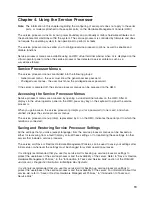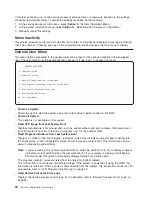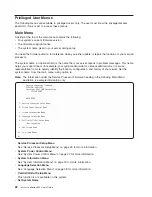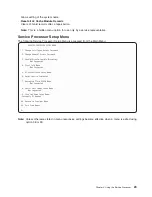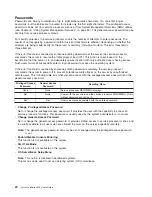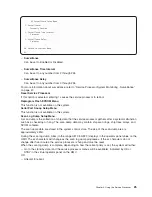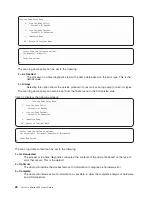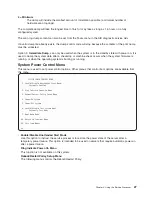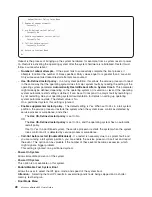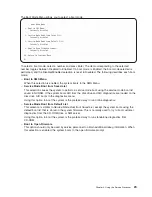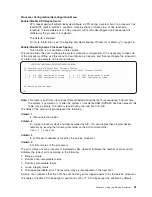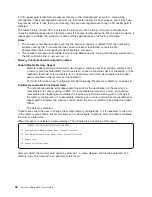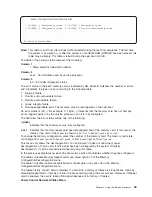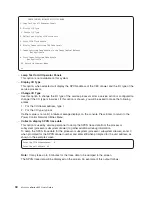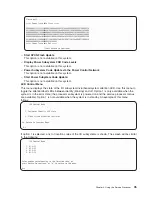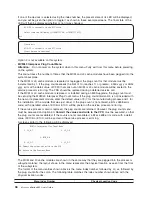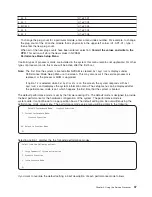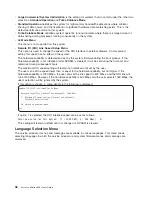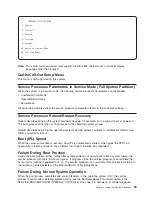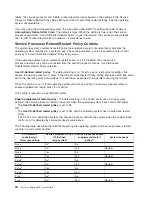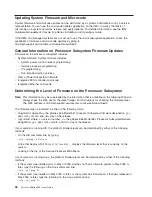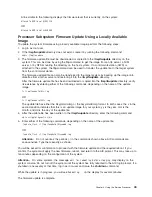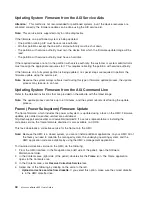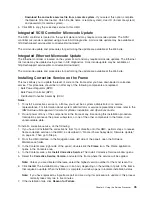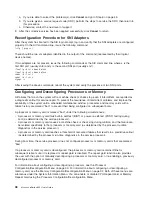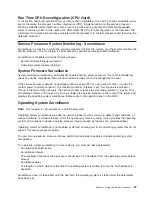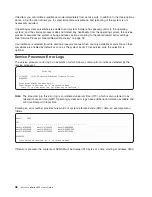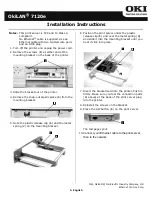
MEMORY
CONFIGURATION/DECONFIGURATION
MENU
1.
16.16(00,
-)
Configured
by
system
2.
16.17(00,
-)
Configured
by
system
3.
16.18(00,
-)
Configured
by
system
4.
16.19(00,
1)
Partially
deconfigured
by
system
98.
Return
to
Previous
Menu
Note:
This
table
is
built
from
vital
product
data
collected
during
the
last
boot
sequence.
The
first
time
the
system
is
powered
on,
or
after
the
system’s
nonvolatile
RAM
(NVRAM)
has
been
erased,
this
table
may
be
empty.
The
table
is
rebuilt
during
the
next
boot
into
AIX.
The
fields
in
the
previous
table
represent
the
following:
Column
1
1.
Menu
selection
index/card
number
Column
2
xx.xx
:
Card
address
used
by
service
processor
Column
3
(00.-)
Error/deconfiguration
status
The
error
status
of
the
each
memory
card
is
indicated
by
AB,
where
B
indicates
the
number
of
errors
and
A
indicates
the
type
of
error
according
to
the
following
table:
1.
Bring-up
failure
2.
Run-time
non-recoverable
failure
3.
Run-time
recoverable
failure
4.
Group
integrity
failure
5.
Non-repeat-gardable
error.
The
resource
may
be
reconfigured
on
the
next
boot.
An
error
status
of
(00,
-)
(for
example,
11.16(00,
-))
indicates
that
the
memory
card
has
not
had
any
errors
logged
against
it
by
the
service
processor,
and
it
is
fully
configured.
The
field
after
the
error
status
will
be
one
of
the
following:
-
(dash)
indicates
that
the
memory
card
is
fully
configured
0
or
1
indicates
that
memory
repeat
gard
has
deconfigured
half
of
the
memory
card.
If
this
occurs,
the
status
of
the
card
in
the
menu
is
shown
as
Partially
deconfigured
by
system
.
To
change
the
memory
configuration,
select
the
number
of
the
memory
card.
The
memory
card
state
will
change
from
configured
to
deconfigured
or
from
deconfigured
to
configured
.
This
menu
only
allows
the
deconfiguration
of
an
entire
card;
it
does
not
allow
the
manual
deconfiguration
of
half
a
card.
If
half
a
card
has
been
configured
by
the
system
(
″
Partially
deconfigured
″
),
it
can
be
manually
reconfigured
using
this
menu.
In
the
previous
example
menu,
each
line
shows
two
cards
and
indicates
whether
they
are
configured.
To
enable
or
disable
Memory
Repeat
Gard,
use
menu
option
77
of
the
Memory
Configuration/Deconfiguration
menu.
To
enable
or
disable
runtime
recoverable
error
repeat
gard,
use
option
78
of
the
Memory
Configuration/Deconfiguration
menu.
The
failure
history
of
each
card
is
retained.
If
a
card
with
a
history
of
failures
is
brought
back
online
by
disabling
Repeat
Gard,
it
remains
online
if
it
passes
testing
during
the
boot
process.
However,
if
Repeat
Gard
is
enabled,
the
card
is
taken
offline
again
because
of
its
history
of
failures.
v
Power
Control
Network
Utilities
Menu
Chapter
4.
Using
the
Service
Processor
33
Summary of Contents for p 655 series
Page 1: ...pSeries 655 User s Guide SA38 0617 03 ERserver...
Page 2: ......
Page 3: ...pSeries 655 User s Guide SA38 0617 03 ERserver...
Page 10: ...viii Eserver pSeries 655 User s Guide...
Page 14: ...xii Eserver pSeries 655 User s Guide...
Page 16: ...xiv Eserver pSeries 655 User s Guide...
Page 24: ...6 Eserver pSeries 655 User s Guide...
Page 32: ...14 Eserver pSeries 655 User s Guide...
Page 36: ...18 Eserver pSeries 655 User s Guide...
Page 90: ...72 Eserver pSeries 655 User s Guide...
Page 144: ...126 Eserver pSeries 655 User s Guide...
Page 208: ...190 Eserver pSeries 655 User s Guide...
Page 214: ...196 Eserver pSeries 655 User s Guide...
Page 217: ......

